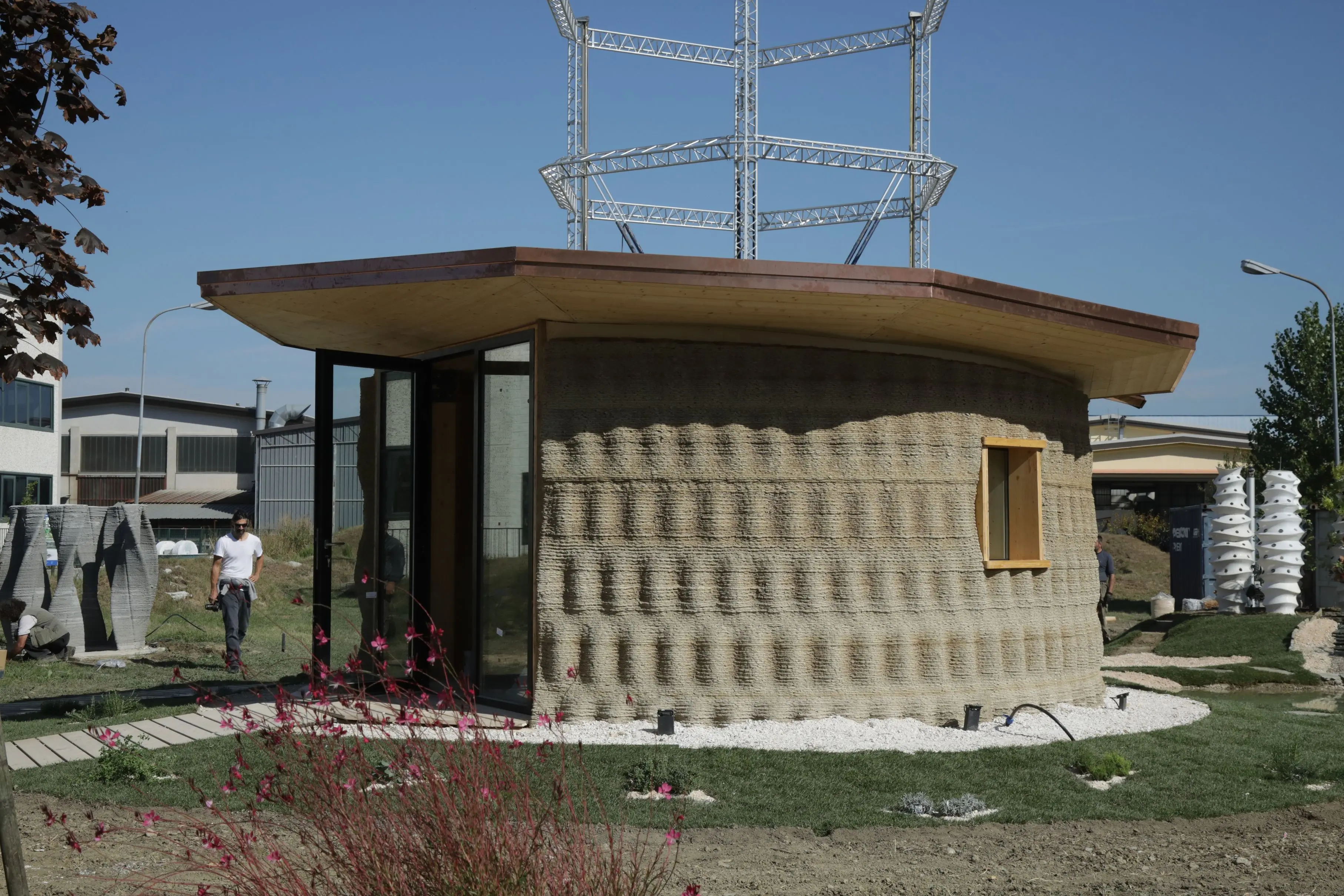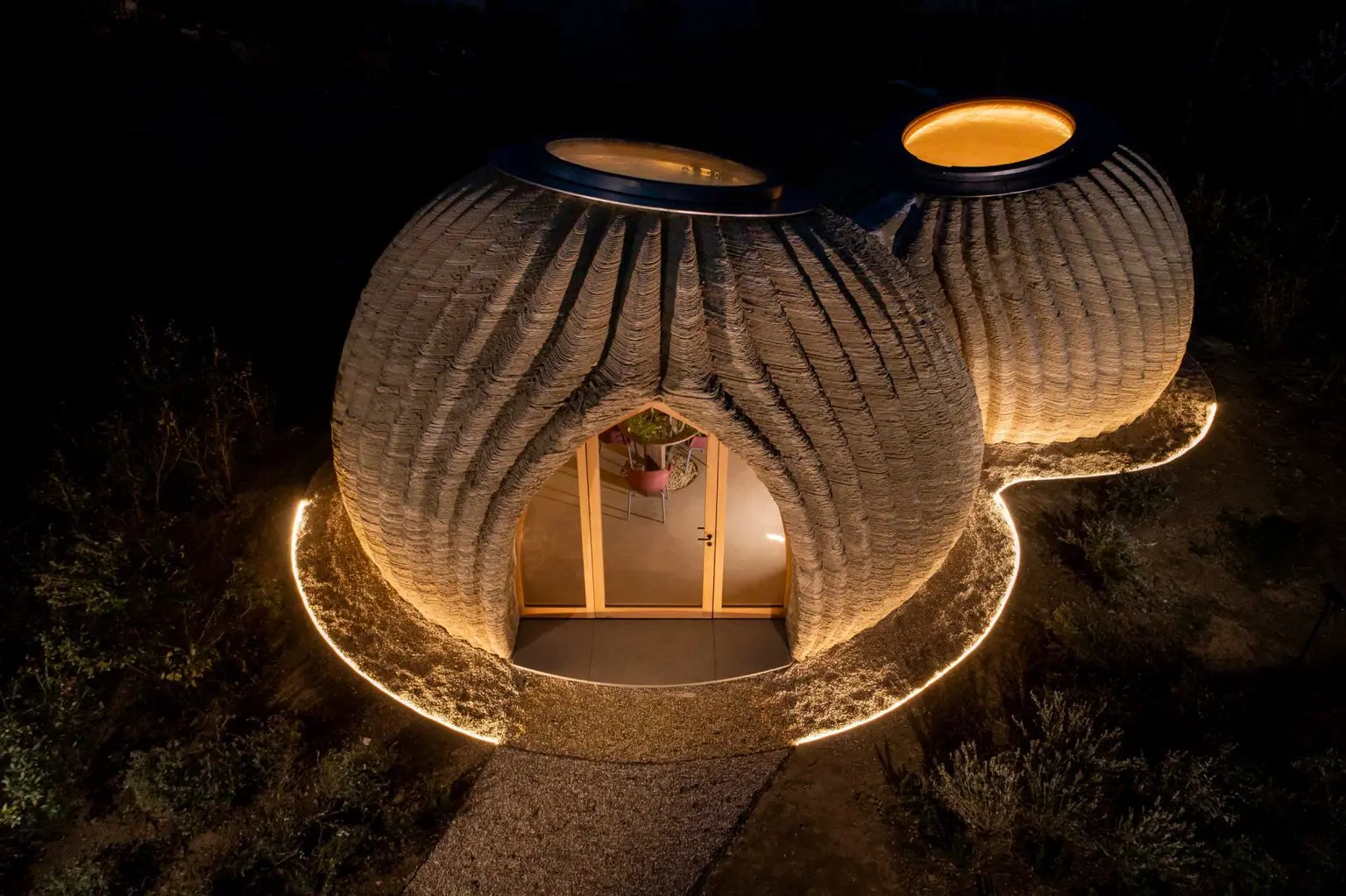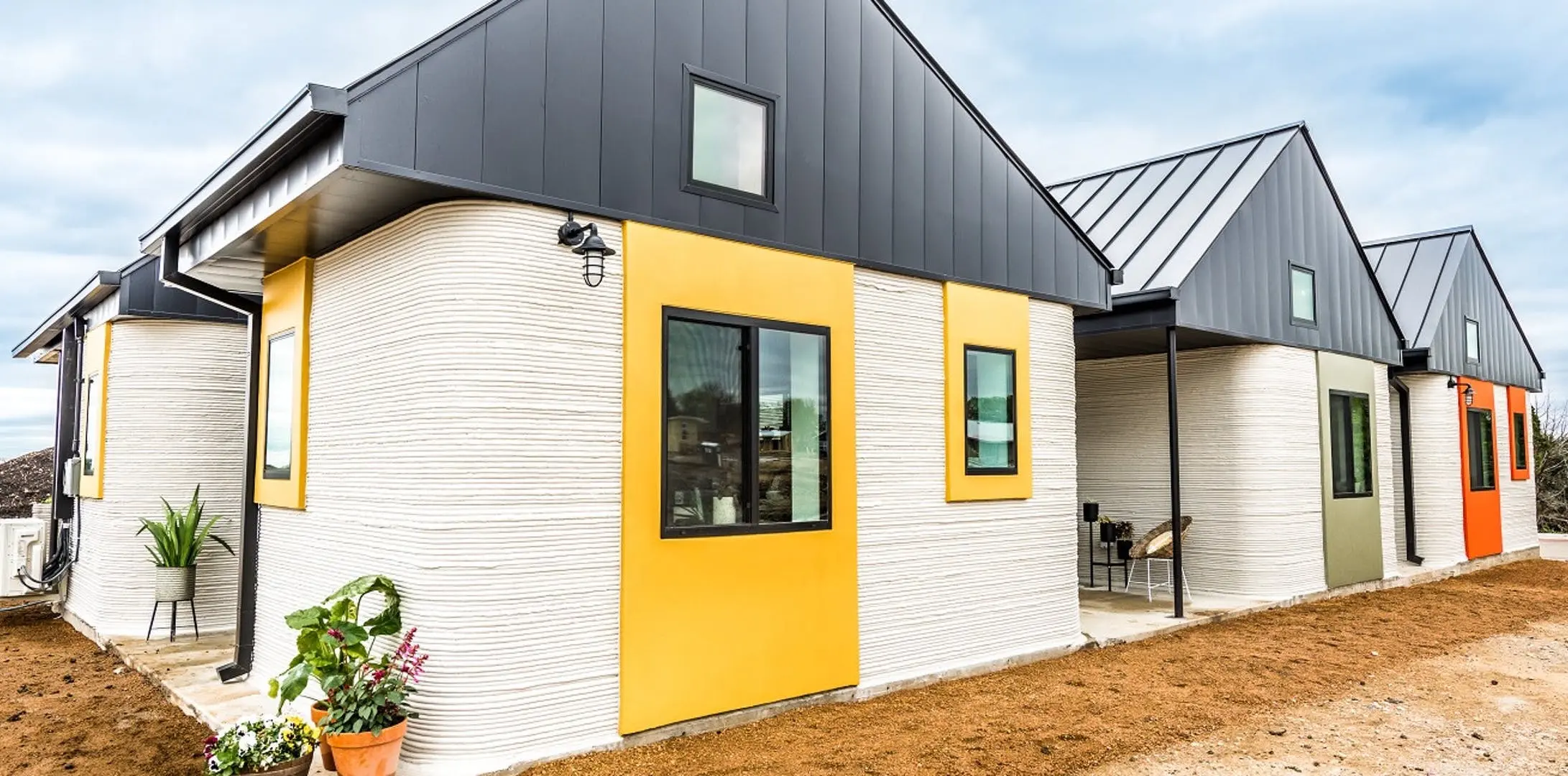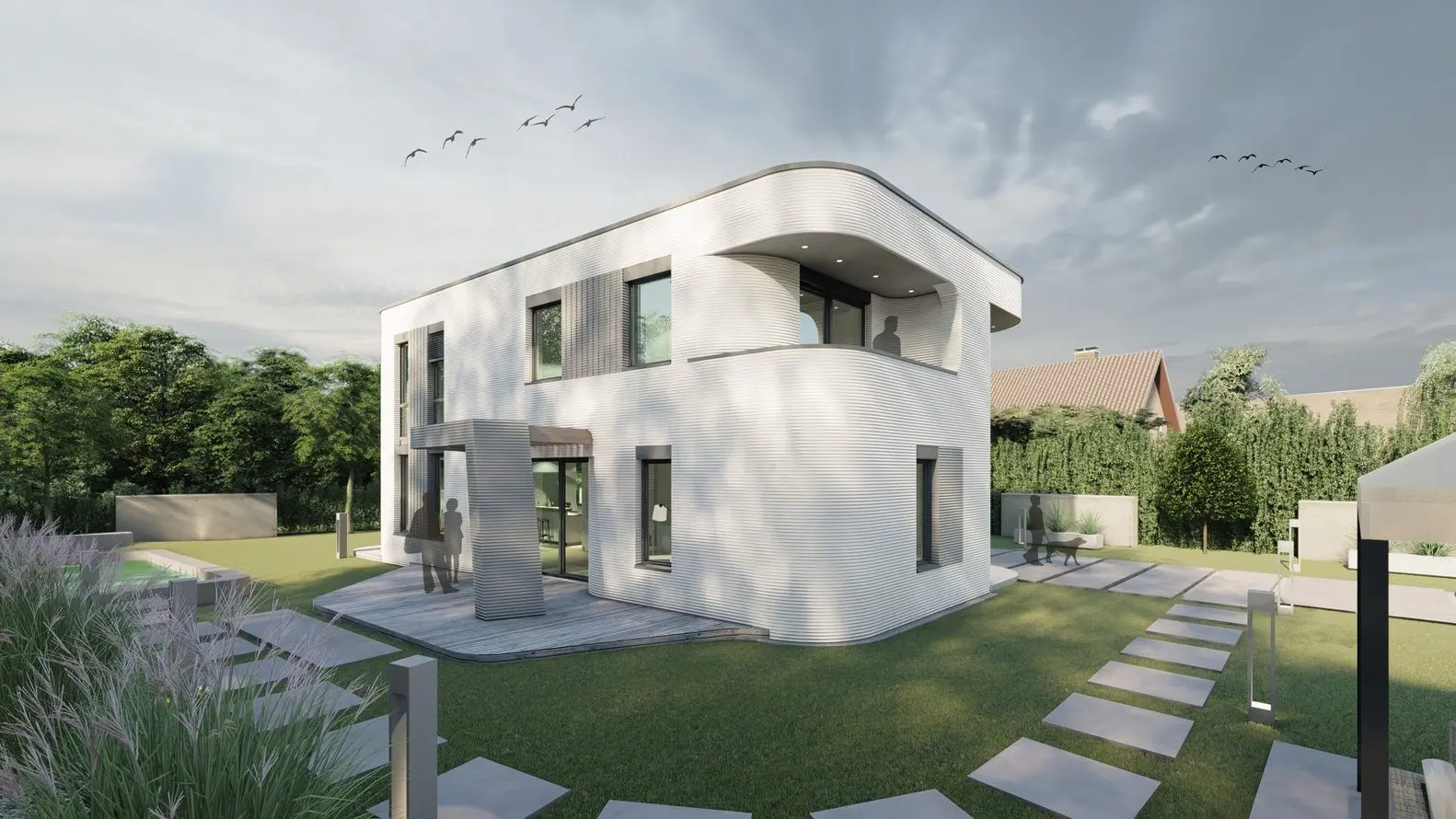Contents
- Shelter from the elements in Amsterdam – 8 sq. m
- Houses made of garbage and clay – 30 and 60 sq.m
- Printed house in the suburbs – 37 sq. m
- Houses for the homeless – 38 and 45 sq. m
- “House of Lotus” – 60 sq.m
- The first two-story printed house in Germany – 80 sq. m
- House-ecosystem Curve Appeal – 240 sq. m
- The world’s largest printed building in Dubai – 641 sq. m
Garbage houses for the price of an iPhone and palaces printed in a few days. We tell how 3D printing has transformed the construction industry and what modern printers are capable of
Shelter from the elements in Amsterdam – 8 sq. m
In 2015, the Dutch bureau Dus Architects built a tiny house of 8 square meters. m. It is located in the industrial area of Amsterdam, and anyone can rent it. Despite the small area, the shelter has a veranda and a sofa that converts into a double bed. The bathroom, also created on a 3D printer, is taken outside. The shelter was built from bioplastic based on linseed oil. To make a stable house without heavy frames, the engineers designed the walls in the form of a honeycomb.

“Urban Shelter” is part of a project to build temporary functional housing. The Dutch authorities hope that 3D printing will help provide housing for victims of natural disasters in the future.
Houses made of garbage and clay – 30 and 60 sq.m
Italian company WASP has printed a tiny 30 sq. m, the cost of which was only about $ 1. The building received the symbolic name Gaia – in honor of Gaia, the ancient Greek goddess of the Earth, since only natural materials were used in the construction.
Engineers are confident the cost-effective technology can be used to build temporary shelters for victims of natural disasters or refugees. The house became part of the Shambhala Village project, the first settlement in the world where all buildings will be printed.

Another WASP project is the futuristic Tecla house created in 2021 with Mario Cucinella Architects. Residential building with an area of 60 sq. m printed in 200 hours.

The company’s printer can use both concrete and a biodegradable mixture of clay, straw, rice husks and hydraulic lime as “ink”. Construction takes place in two stages: first, the concrete frame of the wall is printed, and then the printer fills its inner layer with clay. The main advantage of the technology used by WASP is the absence of construction debris.
Printed house in the suburbs – 37 sq. m
An unusual house in Stupino near Moscow is one of the first projects of Apis Cor, a Boston startup with Russian roots. The construction of the building was completed in the winter of 2017. House of 37 sq. m was built in 20 hours, and its cost was ₽590 thousand.
For printing, a special concrete mixture was used – fiber-reinforced concrete. The material sets only at temperatures above 5°C, so the construction site was covered with a tent. At the same time, the finished building can withstand temperatures down to minus 35°C. For construction, an industrial printer weighing 2,5 tons was used, which allows you to design up to 100 square meters. m of housing per day.
Unlike most competitors, Apis Cor prints its buildings on site rather than assembling them from prefabricated blocks. The house in Stupino became an advertisement for startup technology: Apis Cor founder Nikita Chen-yun-tai intended to sell printers, not houses. The idea of the Russian startup was successful – even Time wrote about an innovative house in the Moscow region.
Houses for the homeless – 38 and 45 sq. m
Icon is an American robotics startup focused on 3D printing of large-scale objects. For example, together with NASA, they designed a prototype rocket landing pad, and are now planning a project for a printed lunar space station, Olympus. But the company is also engaged in more mundane buildings.
Together with design firm Logan Architecture, Icon printed six houses for the poor in 2020. Each area is 38 sq. m. For construction, a Vulcan II 3D printer and special concrete were used. All buildings have an equipped kitchen, living room, bedroom and bathroom. The 3D quarter was built on the territory of an already existing community for the former homeless, where more than two hundred people now live.

In Mexico, Icon is partnering with New Story, a foundation that collects donations to build safe, affordable housing for the poor. In 2019, the organizers of the project announced that they plan to print 50 houses, each of which will have two bedrooms, a bathroom, a kitchen and a living room. The area of Mexican houses is 45 square meters. m.

Since 3D-printed houses are built many times faster and cheaper than usual, they can be a lifesaver for the homeless.
“House of Lotus” – 60 sq.m
In 2018, a solar “Lotus House” with an area of 60 square meters was created in China. m. It was designed by students of the University of Washington as part of the Solar Decathlon China 2018 competition. The task of the participants was to create an environmentally friendly building that would run on alternative energy sources. The student team went further and decided that even the construction process itself should be waste-free and carbon-neutral.
The building itself is only partially created using a 3D printer. On it, engineers made molds for casting concrete walls. The advantage of this approach is that the printed designs can be used at least a hundred times. In conventional construction, wooden molds are used, which wear out after only two castings.
The building itself was made in the shape of a lotus – the designers said that in the design they wanted to emphasize the beauty and delicacy of Chinese culture.

The first two-story printed house in Germany – 80 sq. m
The two-story villa, which was printed in North Rhine-Westphalia, is an example of the use of 3D printing in the construction of luxury housing with custom design. The living area of the building was 80 sq. The 3D villa is a joint project of MENSE-KORTE ingenieure+architekten and developer PERI GmbH.

During the construction of the villa, a unique BOD3 2D printer was used, which can print pipes. This feature gives designers a free hand: complex engineering solutions on BOD2 can be completed faster and cheaper than with standard construction. ArchDaily writes that an innovative printer used in the construction of a German villa can print 1 sq. m wall in just five minutes.
House-ecosystem Curve Appeal – 240 sq. m
Another example of conceptual 3D printing is the 240 sq. m Curve Appeal Ecosystem Home. The building belongs to WATG Urban Architecture Studio. The printing of the building was completed in 2020.
Construction took three years. The building project was created back in 2016, and then won first place in The Freeform Home Design Challenge. Designers received $8 from the organizers to implement the concept.

Curve Appeal is made from 28 printed panels. The unusual design maintains the microclimate of the house: according to the designers, the temperature inside the building does not depend on the weather outside.
The world’s largest printed building in Dubai – 641 sq. m
The largest 3D printed building in the world is located in the UAE. Building with an area of 641 sq. m for the municipality of Dubai in 2019 was built by Apis Cor – the same startup with Russian roots that printed a house in the Moscow region. According to the plan of the Dubai authorities, by 2030, 25% of new buildings will be built using 3D printing, as the technology allows to reduce the cost of construction by six times.

In terms of structure and appearance, the building is similar to an ordinary one, made of concrete and reinforcement. It took 500 hours to print, but preparations for construction took three whole years. The creator of Apis Cor, our countryman Nikita Chen-yun-tai, said that this project brought him $1 million in revenue and attracted new customers. Among them is the Orwo film studio from Louisiana, for which the startup will print scenery for films.










